#diversesharks
Photo

Species Profile No. 43: David’s Angelshark (Squatina david) David’s Angelshark is a fairly mysterious shark species! This shark was first scientifically described in 2016, making it a somewhat recent discovery. Females have white spots, while males are darker. They live in soft substrates along the continental slope, making them a coastal species, like many other angel sharks. David’s angelshark is globally listed as Near Threatened by the IUCN. Since this is a recently described species, their population size is unknown, but they have been caught by longlines, gillnets, and trawls in Venezuela - industries that have grown in that area. For this reason, the IUCN lists the population as declining. The reproduction of this species is unknown, but it is believed to have slow reproduction, similar to other angelsharks. This makes this species especially vulnerable to overfishing. To help support angel sharks, make sure to support @angelsharkproject, the Angel Shark Conservation Network, ElasmoCan, Shark Advocates International, and the Shark Conservation Fund. ••• Big thanks to our Patron, Clay Herber! ••••••••••••••••••••••••• #angelsharkprofiles #shark #sharks #angelshark #davidsangelshark #squatina #diversesharks #sharkeducation #savesharks #savethesharks #helpsavesharks #bycatch #overfishing #stopoverfishing #replacefearwithfacts #stopsharkfinning https://www.instagram.com/p/B3meWBZBRy5/?igshid=1khx1zvbo59do
#angelsharkprofiles#shark#sharks#angelshark#davidsangelshark#squatina#diversesharks#sharkeducation#savesharks#savethesharks#helpsavesharks#bycatch#overfishing#stopoverfishing#replacefearwithfacts#stopsharkfinning
12 notes
·
View notes
Photo
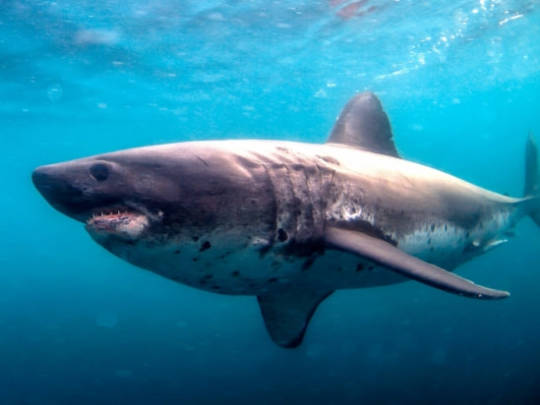
@mcmsharksxx: The salmon #shark (Lamna ditropis) does not look like a salmon fish (nor is it pink or red or whatever hues salmon find trendy nowadays). These #diversesharks are found swimming in the eastern and western North Pacific! More with @finsunited: https://t.co/XVRyzN90hD #SharkWeek https://t.co/pzaMhQhtx9
0 notes
Photo

Species Profile No. 30: The Great Hammerhead (Sphyrna mokarran) The great hammerhead is the largest hammerhead species, usually reaching lengths of 11 feet, with the largest individual measuring a whopping 20 feet long! This species is also one of the most well-known. They eat a wide range of prey, from bony fishes to smaller sharks. Stingrays are one of their favorite foods! Great hammerheads are listed as Endangered. Females breed once every two years, giving birth to 20-40 pups after an 11 month long gestation. While they have large litters, most of the pups are likely eaten by predators, which include larger sharks. Great hammerheads are taken as targets and bycatch, and may be at greater risk than other species because they stick to tropical waters where there are more fisheries. Their fins are very large and high quality, which drives the demand to capture these sharks. They are protected by some finning bans, quotas, and pelagic shark protection plans, but it is unclear how helpful these measures have been to recovering their populations. Their population is still decreasing. As is often the case, the protections that exist for great hammerheads need better enforcement, and more research needs to be done on these incredible sharks. To help endangered sharks like the great hammerhead, please support Shark Advocates International and the IUCN Shark Specialist Group. ••••••••••••••••••••••••• #hammerheadprofiles #shark #sharks #hammerhead #hammerheadshark #greathammerhead #diversesharks #sharkeducation #savesharks #savethesharks #helpsavesharks #bycatch #overfishing #stopoverfishing #replacefearwithfacts #stopsharkfinning https://www.instagram.com/p/BxyhyNoBPdH/?igshid=yv63wid7tgsc
#hammerheadprofiles#shark#sharks#hammerhead#hammerheadshark#greathammerhead#diversesharks#sharkeducation#savesharks#savethesharks#helpsavesharks#bycatch#overfishing#stopoverfishing#replacefearwithfacts#stopsharkfinning
27 notes
·
View notes
Photo

Species Profile No. 41: The African Angelshark (Squatina africana) This isn’t a strictly scientific opinion, but I think that African angelsharks are exceptionally beautiful with their adorable spots! We here at TD may be biased towards sharks with spots in general. But besides that, these sharks are found along the continental shelf, and live in areas that are sandy/muddy at the bottom. They are classified as Near Threatened by the IUCN. Not a lot seems to be known about their reproduction, but they’re very similar to the Pacific angelshark, which has a generation length of a whopping 23 years! Since angelsharks generally reproduce slowly, it’s not a stretch to assume that the African angelshark is sensitive to overfishing. African angelsharks are caught by several types of fisheries. They seem to mostly be caught as bycatch by prawn trawling fisheries and gillnets. In South Africa, trawling operations often catch juvenile sharks, meaning that the deep waters there could be a nursery area for the species, as could similar deepwater areas where trawling occurs. As is often the case, more information about the rates at which these sharks are caught is needed. They don’t fall under much protection other than living in several Marine Protected Areas. The IUCN has suggested that using Turtle Exclusion Devices, devices used to keep turtles out of trawlers, would benefit this species by reducing the rate of bycatch. To help support angel sharks, make sure to support @angelsharkproject, the Angel Shark Conservation Network, Shark Advocates International, and the Shark Conservation Fund. ••• Big thanks to our Patron, Clay Herber! ••••••••••••••••••••••••• #angelsharkprofiles #shark #sharks #angelshark #africanangelshark #africanwildlife #africa #squatina #diversesharks #sharkeducation #savesharks #savethesharks #helpsavesharks #bycatch #overfishing #stopoverfishing #replacefearwithfacts #stopsharkfinning https://www.instagram.com/p/B1d0U7SBJ6u/?igshid=18dxuwdty72mn
#angelsharkprofiles#shark#sharks#angelshark#africanangelshark#africanwildlife#africa#squatina#diversesharks#sharkeducation#savesharks#savethesharks#helpsavesharks#bycatch#overfishing#stopoverfishing#replacefearwithfacts#stopsharkfinning
9 notes
·
View notes
Photo

Species Profile No. 39: The Chilean Angelshark (Squatina armata) Today we’re featuring another incredibly mysterious shark, the Chilean Angelshark. Listed as Data Deficient, the IUCN page of this species states that “nothing is known of its biology.” These sharks don’t seem to be caught very often, but the only fisheries information about them comes from Peru, and nothing is known of their value to fisheries in any other country. While it’s a bit disappointing to make a post with so little information, we want to give you all a chance to learn a little bit about every angel shark species! Learning about how many shark species are poorly understood is also important, as it highlights the pressing need for more shark research. Remember that the best way to support species like the Chilean Angelshark is to donate directly to research groups/funding bodies, such as the Shark Conservation Fund. To help support angel sharks, make sure to support @angelsharkproject, the Angel Shark Conservation Network, Shark Advocates International, and the Shark Conservation Fund. ••• Big thanks to our Patron, Clay Herber! ••••••••••••••••••••••••• #angelsharkprofiles #shark #sharks #angelshark #disparateangelshark #mexicanangelshark #squatina #diversesharks #sharkeducation #savesharks #savethesharks #helpsavesharks #bycatch #overfishing #stopoverfishing #replacefearwithfacts #stopsharkfinning https://www.instagram.com/p/B1WeTk2BW48/?igshid=gvp78lxzq4q7
#angelsharkprofiles#shark#sharks#angelshark#disparateangelshark#mexicanangelshark#squatina#diversesharks#sharkeducation#savesharks#savethesharks#helpsavesharks#bycatch#overfishing#stopoverfishing#replacefearwithfacts#stopsharkfinning
5 notes
·
View notes
Photo
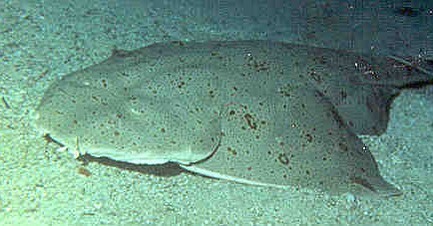
Species Profile No. 42: The Pacific Angelshark (Squatina californica) Pacific angelsharks are found in a variety of habitats along the Pacific coast of North America. They tend to prefer soft-bottom habitats, where they can bury themselves in sediment to ambush their prey. They can be found in shallow bays, coral reefs, kelp forests, and even estuaries! Unlike many sharks, they tend to stay in a certain small, set area, rather than traveling wide distances. Pacific angelsharks are globally listed as Near Threatened by the IUCN. This species takes a long time to mature and reproduce, usually becoming sexually mature at 8-13 years. Females produce litters with an average of 6 pups once per year. Their population is currently declining. In 1976, California’s halibut fishery began targeting Pacific Angelsharks, fishing them for their meat. This led to an over-exploitation of the species, leading to catch limits in 1986, which was ineffective at recovering the population. A gillnet ban was eventually introduced in 1994, which stopped the California fishery. They are still caught as bycatch by shrimp trawlers in California, and are fished for in Mexico to meet the demand that is no longer being met by the California fishery. The Mexican fisheries are very poorly understood, and more research/management is needed. To help support angel sharks, make sure to support @angelsharkproject, the Angel Shark Conservation Network, Shark Advocates International, and the Shark Conservation Fund. ••• Big thanks to our Patron, Clay Herber! ••••••••••••••••••••••••• #angelsharkprofiles #shark #sharks #angelshark #pacificangelshark #squatina #diversesharks #sharkeducation #savesharks #savethesharks #helpsavesharks #bycatch #overfishing #stopoverfishing #replacefearwithfacts #stopsharkfinning https://www.instagram.com/p/B1otFDEhP-t/?igshid=1vphxt1qq6ns6
#angelsharkprofiles#shark#sharks#angelshark#pacificangelshark#squatina#diversesharks#sharkeducation#savesharks#savethesharks#helpsavesharks#bycatch#overfishing#stopoverfishing#replacefearwithfacts#stopsharkfinning
4 notes
·
View notes
Photo
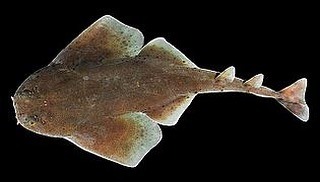
Species Profile No. 32: The Sand Devil (Squatina dumeril) The sand devil is a species of angel shark - pretty contradictory name, I know! This species is also known as the Atlantic Angelshark. They live on the east coast of North America. They’re a bottom-dwelling species, living close to the shore during the spring and summer, but live in much deeper waters during the fall and winter. They catch their prey by settling into sand or mud and ambushing their food! The sand devil is globally listed as Least Concern by the IUCN. Females give birth once every two years upon reaching maturity, with a gestation period of 12 months and litters that contain 4-25 pups. While a whole year is a long time to be pregnant, these sharks have a generation length of 8.25 years - which is short for a shark! We’ll be able to see how this compares to some of the more threatened angel sharks as we cover more species later on. Sand devils are sometimes caught as bycatch, but the areas that they inhabit currently aren’t targeted by shrimp trawling fisheries. However, as fisheries expand, sand devils could find themselves at risk due to higher rates of bycatch. The IUCN states that this species is vulnerable to overexploitation. Let’s hope that this species can remain safe from fisheries well into the future! To keep the sand devil safe, make sure to support @angelsharkproject, the Angel Shark Conservation Network, Shark Advocates International, and the IUCN Shark Specialist Group. ••••••••••••••••••••••••• #angelsharkprofiles #shark #sharks #angelshark #sanddevil #sanddevilshark #atlanticangelshark #diversesharks #sharkeducation #savesharks #savethesharks #helpsavesharks #bycatch #overfishing #stopoverfishing #replacefearwithfacts #stopsharkfinning https://www.instagram.com/p/B0EGUHYBUU5/?igshid=1gtslfwlti3d9
#angelsharkprofiles#shark#sharks#angelshark#sanddevil#sanddevilshark#atlanticangelshark#diversesharks#sharkeducation#savesharks#savethesharks#helpsavesharks#bycatch#overfishing#stopoverfishing#replacefearwithfacts#stopsharkfinning
6 notes
·
View notes
Photo
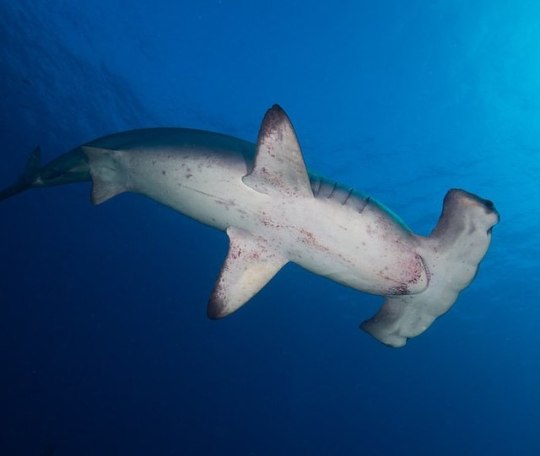
Species Profile No. 29: The Scalloped Hammerhead (Sphyrna lewini) The scalloped hammerhead is one of the two most well-known hammerhead species, along with the great hammerhead. These two species are usually what people will envision if you say the word hammerhead! Scalloped hammerheads can be recognized by the shape of the front of their head, which has a scalloped edge, whereas great hammerheads have a smooth head. Scalloped hammerheads are listed as Endangered. Females can take as long as 15 years to mature, and pregnancy lasts for 9-12 months. Scalloped hammerheads have fairly large litters of 12-40 pups, but infant mortality is likely high, due to natural predators and fishing pressure. These sharks are captured, intentionally and accidentally, at all life stages. The main product derived from scalloped hammerheads is their fins, which are highly valuable. There may also be several genetically distinct groups of scalloped hammerheads, and some populations could be more threatened than others. More research is needed in this area. They are protected by some finning bans, quotas, and pelagic shark protection plans, but it is unclear how helpful these measures have been to recovering their populations. Whether their overall population is increasing or decreasing is unknown. As with many species of sharks, scalloped hammerheads are in need of more research and stricter protection regulation. To help endangered sharks like the scalloped hammerhead, please support Shark Advocates International and the IUCN Shark Specialist Group. ••••••••••••••••••••••••• #hammerheadprofiles #shark #sharks #hammerhead #hammerheadshark #scallopedhammerhead #diversesharks #sharkeducation #savesharks #savethesharks #helpsavesharks #bycatch #overfishing #stopoverfishing #replacefearwithfacts #stopsharkfinning https://www.instagram.com/p/BxtNL6HhuLd/?igshid=bjaiuxcdxcaj
#hammerheadprofiles#shark#sharks#hammerhead#hammerheadshark#scallopedhammerhead#diversesharks#sharkeducation#savesharks#savethesharks#helpsavesharks#bycatch#overfishing#stopoverfishing#replacefearwithfacts#stopsharkfinning
12 notes
·
View notes
Photo
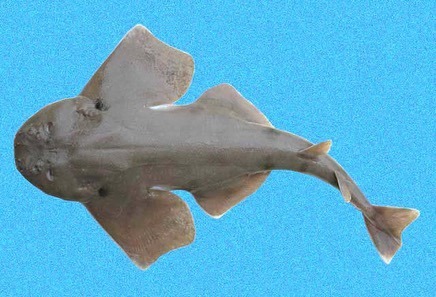
Species Profile No. 36 & 37: The Disparate Angel Shark (Squatina heteroptera) and Mexican Angel Shark (Squatina mexicana) We’ve decided to do a very special two-for-one species profile post! We chose to feature them together because they have something in common: nothing seems to be known about them! They are not assessed by the IUCN. They are found in the Gulf of Mexico, but nothing more is known about their ecology, reproduction, or population. Species like these are great examples of how important shark research is. You’ve likely seen articles about how poorly understood species like great whites and whale sharks are. For both of these species, there are huge, significant things we don’t know about their reproduction. But they’re two of the most extensively studied species of sharks in the world! When put into this context, it’s easy to see just how much of a complete mystery most other shark species are - especially species like disparate and Mexican angel sharks. To help support angel sharks, make sure to support @angelsharkproject, the Angel Shark Conservation Network, Shark Advocates International, and the IUCN Shark Specialist Group. ••••••••••••••••••••••••• #angelsharkprofiles #shark #sharks #angelshark #disparateangelshark #mexicanangelshark #squatina #diversesharks #sharkeducation #savesharks #savethesharks #helpsavesharks #bycatch #overfishing #stopoverfishing #replacefearwithfacts #stopsharkfinning https://www.instagram.com/p/B0TkqEchiCu/?igshid=1gr6p37447z79
#angelsharkprofiles#shark#sharks#angelshark#disparateangelshark#mexicanangelshark#squatina#diversesharks#sharkeducation#savesharks#savethesharks#helpsavesharks#bycatch#overfishing#stopoverfishing#replacefearwithfacts#stopsharkfinning
3 notes
·
View notes
Photo

Species Profile No. 40: The Indonesian Angelshark (Squatina legnota) The Indonesian angelshark is another species that is listed as Data Deficient. Only a few specimens of this shark have ever been found. Like most Data Deficient species, very little is known about them.They are believed to live in deep waters along the continental slope, putting them outside of the reach of most Indonesian fisheries. They are very rarely caught as bycatch, but likely not at a rate significant enough to impact their population. They seem safe from fishing pressure for now, but since angel sharks - and sharks as a whole - are sensitive to overfishing, if Indonesian deepwater fishing expands, they would be at risk of decline. When they are caught as bycatch, they are utilized for their meat and fins, so there could be a market for them if deepwater fishing increased in Indonesia. To help support angel sharks, make sure to support @angelsharkproject, the Angel Shark Conservation Network, Shark Advocates International, and the Shark Conservation Fund. ••• Big thanks to our Patron, Clay Herber! ••••••••••••••••••••••••• #angelsharkprofiles #shark #sharks #angelshark #indonesianangelshark #squatina #diversesharks #sharkeducation #savesharks #savethesharks #helpsavesharks #bycatch #overfishing #stopoverfishing #replacefearwithfacts #stopsharkfinning https://www.instagram.com/p/B1ZFS3mBxha/?igshid=h3oqld66vzjh
#angelsharkprofiles#shark#sharks#angelshark#indonesianangelshark#squatina#diversesharks#sharkeducation#savesharks#savethesharks#helpsavesharks#bycatch#overfishing#stopoverfishing#replacefearwithfacts#stopsharkfinning
2 notes
·
View notes
Photo
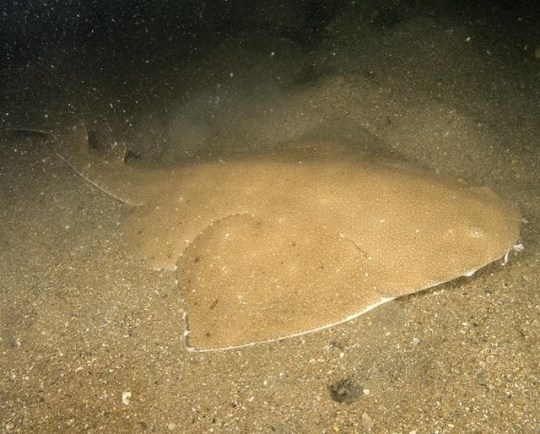
Species Profile No. 34: The Australian Angel Shark (Squatina australis) The Australian angel shark lives along the continential shelf of southern Australia. They thrive in sand or mud flats, seagrass beds, and rocky reefs. They often bury themselves in sediment in order to ambush their prey during the day, but at night they hunt more actively, swimming freely and chasing down their food. Australian angel sharks are globally listed as Least Concern by the IUCN. Their reproduction is poorly understood, but they are known to have litters of up to 20 pups! They are biologically similar to the ornate angel shark, so they may have similar reproduction; ornate angel sharks have pregnancies that last 6-12 months, and reproduce once every two years. Australian angel sharks, like the ornate angel sharks, are captured and killed by some Australian fisheries. Their population is still stable. These sharks are included in some regional protections, and also benefit from the refuge provided by several marine reserves in their range. To help support angel sharks, make sure to support @angelsharkproject, the Angel Shark Conservation Network, Shark Advocates International, and the IUCN Shark Specialist Group. ••••••••••••••••••••••••• #angelsharkprofiles #shark #sharks #angelshark #sanddevil #sanddevilshark #atlanticangelshark #diversesharks #sharkeducation #savesharks #savethesharks #helpsavesharks #bycatch #overfishing #stopoverfishing #replacefearwithfacts #stopsharkfinning https://www.instagram.com/p/B0ObLsLhb3e/?igshid=1kxvgzovm1gp8
#angelsharkprofiles#shark#sharks#angelshark#sanddevil#sanddevilshark#atlanticangelshark#diversesharks#sharkeducation#savesharks#savethesharks#helpsavesharks#bycatch#overfishing#stopoverfishing#replacefearwithfacts#stopsharkfinning
3 notes
·
View notes
Photo
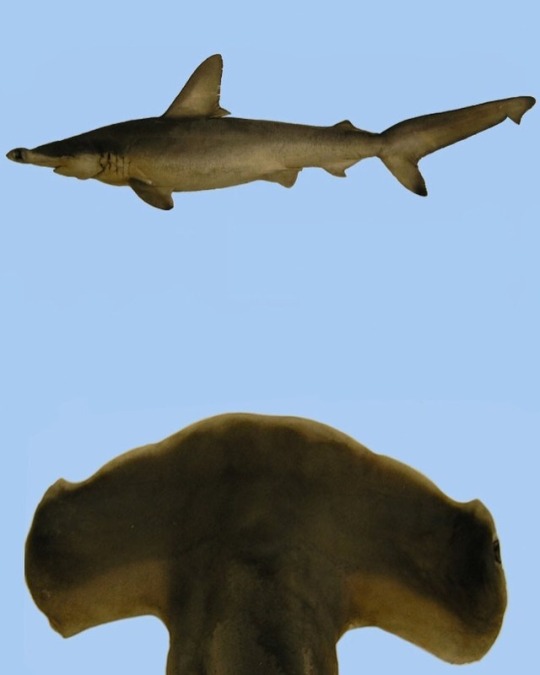
Species Profile No. 25: The Carolina Hammerhead Shark (Sphyrna gilberti) When new species are discovered, it’s usually a small animal, like an insect or amphibian. So imagine the excitement of scientists when they discovered a new, large species of hammerhead! The first recorded Carolina hammerhead was found in 1967, but the researcher who found it - Dr. Carter Gilbert, the inspiration for the species’s binomial name - believed that he had simply found an abnormal scalloped hammerhead with fewer vertebrae. This wasn’t known to be a separate species till a physiological and genetic analysis was published in 2013, formally recognizing the Carolina hammerhead as its own species. The study can be found here: https://www.mapress.com/zootaxa/2013/f/zt03702p178.pdf The Carolina hammerhead looks identical to the scalloped hammerhead, which presumably means they grow to be similar sizes, and the two species are very closely related. Besides its physical traits and genetics, nothing is known about this shark. The Carolina hammerhead is yet to be assessed by the IUCN. Since it is similar to the scalloped hammerhead, an Endangered species, it’s possible that this newly discovered shark could be the victim of heavy overfishing. The only way we’ll be able to know is to research them, so make sure to support the research and conservation of poorly understood sharks by supporting the IUCN Shark Specialist Group and Shark Advocates International. ••••••••••••••••���•••••••• #hammerheadprofiles #shark #sharks #hammerhead #hammerheadshark #carolinahammerhead #diversesharks #sharkeducation #savesharks #savethesharks #helpsavesharks #bycatch #overfishing https://www.instagram.com/p/BwdA-MDBbbg/?utm_source=ig_tumblr_share&igshid=madpy6k6lj5m
#hammerheadprofiles#shark#sharks#hammerhead#hammerheadshark#carolinahammerhead#diversesharks#sharkeducation#savesharks#savethesharks#helpsavesharks#bycatch#overfishing
9 notes
·
View notes
Photo

Species Profile No. 27: The Smooth Hammerhead (Sphyrna zygaena) The smooth hammerhead is the second largest hammerhead species, and can grow up to 16 feet long. They eat rays, smaller sharks, bony fishes, and crustaceans. Smooth hammerheads are listed as Vulnerable by the IUCN. They have gestation periods of 10-11 months, and give birth to 20-50 pups, but the pups are vulnerable and often eaten by predators. Smooth hammerheads are targeted by fisheries, likely throughout their range, as well as being caught as bycatch. They have highly valuable fins, so they are one of the shark species that fisheries will remove the fins from and discard the rest of the shark. These sharks are included in some finning bans and protection programs, but further research is needed to understand whether these methods have been effective. Shark protection laws are often lacking in proper enforcement. To help obscure species like the smooth hammerhead, please support the IUCN Shark Specialist Group and Shark Advocates International. ••••••••••••••••••••••••• #hammerheadprofiles #shark #sharks #hammerhead #hammerheadshark #smoothhammerhead #diversesharks #sharkeducation #savesharks #savethesharks #helpsavesharks #bycatch #overfishing #stopoverfishing #replacefearwithfacts #stopsharkfinning https://www.instagram.com/p/Bwp3_1tBGsO/?utm_source=ig_tumblr_share&igshid=1mfeu7ppcak3u
#hammerheadprofiles#shark#sharks#hammerhead#hammerheadshark#smoothhammerhead#diversesharks#sharkeducation#savesharks#savethesharks#helpsavesharks#bycatch#overfishing#stopoverfishing#replacefearwithfacts#stopsharkfinning
7 notes
·
View notes
Photo

Species Profile No. 31: The Winghead Shark (Eusphyra blochii) The winghead shark has the most impressive cephalofoil of all the hammerheads! This shark is different enough from other hammerheads to be sorted into its own genus, Eusphyra, rather than being in the Sphyrna genus with the rest of its relatives. The width of the head is equal to around half of the shark’s body length! This means that all of the benefits of a wide head, from vision to electroreception, are magnified in the winghead. They also have elongated nostrils, which improves their sense of smell. The winghead is listed as Endangered by the IUCN. Females give birth to 6-25 after a gestation period of 8-11 months. They have one litter per year. Winghead sharks are overfished through much of their range, being targeted for meat, fins, and oil. They are also likely caught as bycatch as well. Their population is known to be decreasing. There is currently no species-specific protection for these sharks. To help endangered species like the winghead, please support Shark Advocates International and the IUCN Shark Specialist Group. ••••••••••••••••••••••••• #hammerheadprofiles #shark #sharks #hammerhead #hammerheadshark #winghead #wingheadshark #diversesharks #sharkeducation #savesharks #savethesharks #helpsavesharks #bycatch #overfishing #stopoverfishing #replacefearwithfacts #stopsharkfinning https://www.instagram.com/p/Bx5MJCHB6Bw/?igshid=wfj36qkg4qrf
#hammerheadprofiles#shark#sharks#hammerhead#hammerheadshark#winghead#wingheadshark#diversesharks#sharkeducation#savesharks#savethesharks#helpsavesharks#bycatch#overfishing#stopoverfishing#replacefearwithfacts#stopsharkfinning
3 notes
·
View notes
Photo

Species Profile No. 28: The Smalleye Hammerhead (Sphyrna tudes) The smalleye hammerhead lives in coastal, murky waters, which is likely why it has smaller eyes than other hammerheads. They feed on crabs, bony fishes, and newborn shark pups. Adult males and juveniles form large shoals, but adult females are solitary, so this species is an example of shark social behavior! The smalleye hammerhead is listed as Vulnerable by the IUCN. They have a gestation period of 10 months, and give birth to 5-12 pups per litter. This slow reproduction makes them vulnerable to overfishing. Smalleye hammerheads are caught by gillnet and artisanal fisheries. They face significant fishing pressure, but no conservation actions are in place for this species. To help obscure species like the smalleye hammerhead, please support the IUCN Shark Specialist Group and Shark Advocates International. ••••••••••••••••••••••••• #hammerheadprofiles #shark #sharks #hammerhead #hammerheadshark #smalleyehammerhead #diversesharks #sharkeducation #savesharks #savethesharks #helpsavesharks #bycatch #overfishing #stopoverfishing #replacefearwithfacts #stopsharkfinning https://www.instagram.com/p/BwuyDcaBGrR/?utm_source=ig_tumblr_share&igshid=mfw7tlsh8ktb
#hammerheadprofiles#shark#sharks#hammerhead#hammerheadshark#smalleyehammerhead#diversesharks#sharkeducation#savesharks#savethesharks#helpsavesharks#bycatch#overfishing#stopoverfishing#replacefearwithfacts#stopsharkfinning
4 notes
·
View notes
Photo

Species Profile No. 26: The Scalloped Bonnethead (Sphyrna corona) The scalloped bonnethead reaches lengths of only three feet, and may be the smallest species of the family! They live in inshore habitats, especially those that have soft bottoms, like sand, mud, and gravel. They can also be found in mangrove forests and estuaries. They eat a variety of foods like crustaceans, cephalopods, molluscs, echinoderms (the family of starfish, sea cucumbers, etc), and bony fishes. The scalloped bonnethead is listed as Near Threatened by the IUCN. Not much is known about these little sharks, but they are known to only two pups per litter. This species goes unreported within fisheries, but as a small inshore species it is very likely being fished for, and with such small litter sizes it is very vulnerable to overfishing. Nothing is known about its population, so more research is desperately needed to gain a better understanding of this species. They could be rapidly declining, but without a baseline population assessment, researches would have no way of knowing. To help poorly understood species like the scalloped bonnethead, please support the IUCN Shark Specialist Group and Shark Advocates International. ••••••••••••••••••••••••• #hammerheadprofiles #shark #sharks #hammerhead #hammerheadshark #scallopedbonnethead #bonnethead #bonnetheadshark #diversesharks #sharkeducation #savesharks #savethesharks #helpsavesharks #bycatch #overfishing #stopoverfishing #replacefearwithfacts https://www.instagram.com/p/Bwne3eJhNPB/?utm_source=ig_tumblr_share&igshid=1iik6kwsx5ljp
#hammerheadprofiles#shark#sharks#hammerhead#hammerheadshark#scallopedbonnethead#bonnethead#bonnetheadshark#diversesharks#sharkeducation#savesharks#savethesharks#helpsavesharks#bycatch#overfishing#stopoverfishing#replacefearwithfacts
3 notes
·
View notes